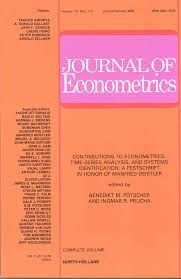
Hoogerheide, L., Kaashoek, J. and van Dijk, H.K. (2007). On the shape of posterior densities and credible sets in instrumental variable regression models with reduced rank: an application of flexible sampling methods using neural networks Journal of Econometrics, 139(1):154--180.
-
Affiliated authors
-
Publication year2007
-
JournalJournal of Econometrics
Likelihoods and posteriors of instrumental variable (IV) regression models with strong endogeneity and/or weak instruments may exhibit rather non-elliptical contours in the parameter space. This may seriously affect inference based on Bayesian credible sets. When approximating posterior probabilities and marginal densities using Monte Carlo integration methods like importance sampling or Markov chain Monte Carlo procedures the speed of the algorithm and the quality of the results greatly depend on the choice of the importance or candidate density. Such a density has to be 'close' to the target density in order to yield accurate results with numerically efficient sampling. For this purpose we introduce neural networks which seem to be natural importance or candidate densities, as they have a universal approximation property and are easy to sample from. A key step in the proposed class of methods is the construction of a neural network that approximates the target density. The methods are tested on a set of illustrative IV regression models. The results indicate the possible usefulness of the neural network approach. {\textcopyright} 2006 Elsevier B.V. All rights reserved.